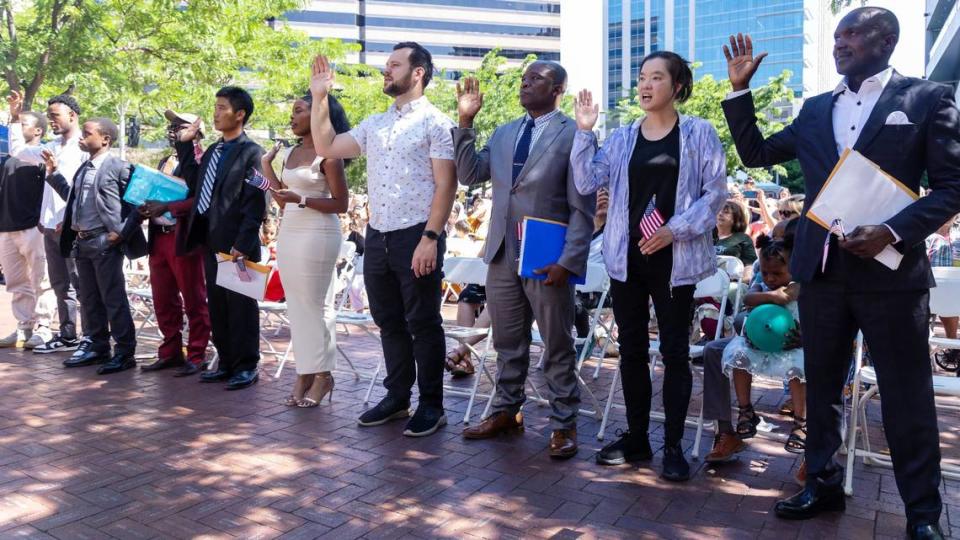As Boise area grows, it’s getting more diverse. That’s driving up this county expense
For Salome Mwangi, who provides Swahili interpretation at the Ada County District Court, the job sometimes starts before she even gets into the courtroom. She may try to explain to her clients what they can expect — that the judge may have limited time, for example, and need them to give brief, specific answers to questions. Or that the judge may ask for their input on their sentence, an unfamiliar concept to some coming from countries where more emphasis is placed on respect for authority.
Once inside the courtroom, she provides simultaneous interpretation — listening to the judge or lawyers speaking in English even as she begins to speak to her client in Swahili. When her client responds, she must do the same back into English. The work involves constant game-time decisions: how to best convey the idea of “misdemeanor” in a language that doesn’t use that word, or the meaning of American idioms like, “You’re a few french fries short of a Happy Meal.”
Demand for services like hers “has gone up tremendously” in recent years, Mwangi told the Idaho Statesman in an interview, as the county grows and becomes more diverse.
The county has the bill to show for it. In a June presentation, Trial Court Administrator Sandra Barrios told county commissioners that the court spent about $330,000 on interpreters in 2023, a 72% increase from the previous year. The number of requests for interpreters has more than doubled in recent years, from about 2,000 in 2020 to over 5,000 in 2023.
Much of the rising cost, Barrios said, was driven by demand for interpretation in languages other than Spanish. In many cases, the court isn’t able to find those interpreters locally, and must fly them in from out of state.
Mwangi, who estimated she does 20 hours of interpreting each week, blamed the lack of availability of local interpreters on the court’s (and other government bodies’) decision to treat interpreters as independent contractors, rather than hiring them into full-time roles.
The system operates like a “gig economy,” she said — making interpretation a “side hustle” without stability or benefits. This forces interpreters to find other full-time work, leaving them less available when the need for their services does arise, said Mwangi and Susan Tirima, another Swahili interpreter.
Under Idaho law, courts must provide an interpreter for any witness or party who doesn’t understand or speak English, or one who has a disability that prevents them from hearing or speaking English. Interpreters are paid by the court.
The court has two full-time Spanish-language interpreters but relies on independent contractors for all other languages. The court needed interpretation for a record-breaking 50 different languages last year, Barrios told commissioners.
After Spanish, Swahili has been the most in-demand language at the court since 2020, according to data Barrios shared with the Statesman. Arabic, Kinyarwanda, French, Russian, Somali and American Sign Language also top the list.
As demands for Swahili interpretation have risen — from about 500 requests in 2020 to over 650 in 2023 — the costs have risen steeply, from about $35,000 to nearly $60,000 in the same time period. (Kinyarwanda, the third-most-commonly requested language other than Spanish, trailed far behind in cost at about $23,000 last year.)
Barrios, who was previously a Spanish interpreter for the court, said the court’s approach to hiring full-time interpreters and independent contractors is simply a question of demand: nearly half of all interpretation requests last year were for Spanish, she told commissioners.
“At this level, we can’t really justify hiring a Swahili interpreter or a Kinyarwanda interpreter,” she said. “But that’s today, and things change constantly.”
How often does Ada County Court have to provide interpreters who speak Swahili?
Police in Boise, neighboring Idaho cities need bilingual officers. Is that need being met?


